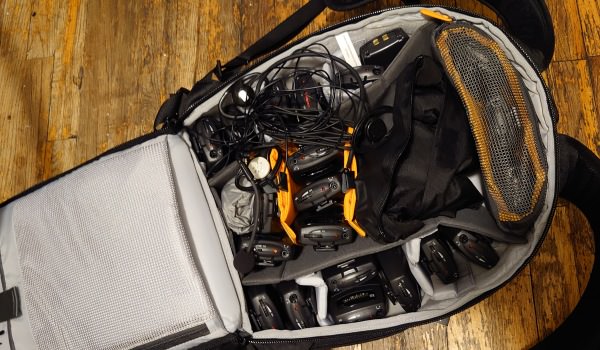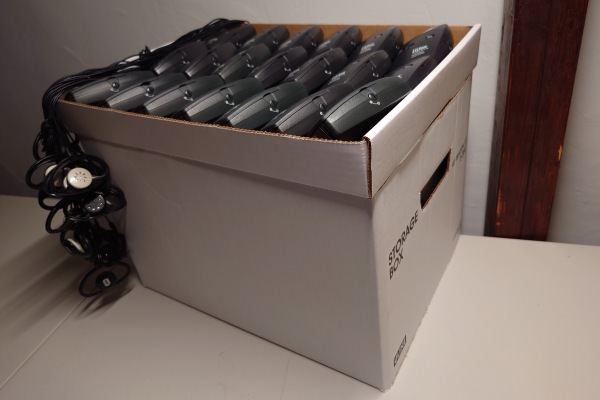Case Study
Tour Guide System Rental for Museum Tours
How iProbe's full service tour guide system rental makes it easy to tour the Met

the client's need
we helped with
- a full service rental of a tour guide system
iProbe Testimonials
Thank you for everything. Everything was nice. Ryan [iProbe's tour audio technician] was very friendly and supportive. So, thank you so much, everything went well, [..] and worked perfect too.
Tour Project Manager, a Brazilian luxury travel companySao Paulo, Brazil
"In a complex structure like The Metropolitan Museum of Art, with its numerous twists, turns, and RF-blocking walls, ensuring clear communication with the tour guide can be challenging. To optimize performance, maintaining line-of-sight with the tour guide is essential for system performance."
Ryan M., Tour Audio Technician, iProbe Multilingual Solutions, Inc.New York, New York, United States
the challenge
For a travel company to organize a private tour at the The Metropolitan Museum of Art in New York City requires significant preparation. To enjoy a great user experience the tour group needs to clearly hear the tour guide.
After a leading Brazilian luxury travel company booked iProbe to support their tour at the Met, iProbe looked to design a solution to meet the needs of such groups.
the solution
local rental in NYC
When a group flies in from overseas to tour New York City sites, it's convenient to rent a tour guide system locally. The group doesn't have to be concerned carrying extra equipment during travel, and can count on equipment that meets United States' FCC regulations for FM systems. iProbe has its rental equipment in Manhattan available, minutes away from the Met.
full service rental
An added convenience is the possibility to have someone from our team help with set up, a quick start system training, and to make sure everything is working well. We can provide a tour audio technician to stay and offer technical support during the tour. Support is available in English, French, Italian, Spanish, and Dutch. At the end of the tour, we can have someone collect the equipment.
line of sight beween transmitter and receiver
it's essential to maintain line of sight between the tour guide wearing the body pack transmitter and the tour group members’ receivers. Specifically, line of sight between the bodypack transmitter and the earphone cable connected to the receiver, which acts as the receiving antenna.
At the Met, when people are walking in a line in a corridor to get to the next gallery, those spaces can be tight. And that some of the routing can be pretty tight where our client’s group may not be able to spread out. When the group gets to the galleries, there usually is more space, so that when they’re looking at a painting or sculpture they should be able to spread out around that piece. We look to manage client expectations accordingly.

iProbe's Met-compliant backpack packed with a tour guide system.

A storage file boxes with 20 tour guide system receivers on its lid.
packing tour guide equipment for the Met
Because of the bag restrictions at the Met, we transport the main equipment in one or more corrugated storage file boxes and the backup equipment in a professional backpack, approved to pass through security. The box lid can be utilized as a tray to distribute one transmitter and receivers for up to about 20 people. The corrugated box is consequently discarded after the equipment has been handed out, prior to going through security.
Our technician wears the backpack on the front, as required by Met regulations. The lower strap help distribute weight more evenly for a more comfortable carrying experience. The backpack fits one backup body pack transmitter and 14 backup receivers, as well as a foldable duffel bag. Once the tour is finished, everyone places their device inside the duffel bag.
a near interference-free experience in a crowded museum
When using tour guide systems in Manhattan where a lot of radio frequencies can be at play, there's an increased chance of RF interference. To mitigate issues at the Met, it's important for tour guide systems to have various frequencies to choose from. At iProbe, we usually prefer frequencies in the 72-76 Mhz in the VHF band. Other permissable frequencies for unlicensed users can be found in the 216 Mhz band or 2.4 Ghz band.
Before delivering the equipment, we preset the frequency of the transmitters and receivers. Once at the museum, time permitting, we test with the tour guide to ensure the tour guide's voice is clear and transmission is functioning correctly. If needed, we switch to another channel as our portable FM tour guide systems offer many frequencies to choose from. It's also important to test the microphone level as excessively high levels could amplify certain sounds inside the museum, which could be perceived as noise. Conducting such tests before the client's arrival is crucial, as troubleshooting during a tour is cumbersome and disruptive.
rental return
Returning the equipment after our full service rentals is a breeze. Our technician unfolds the duffel bag for everyone to drop in their device. An iProbe representative then takes the equipment back to iProbe.
book our tour guide system rentals and enable your audience to hear comfortably.
have a rental you’d like to talk to us about? Contact us any time!
+1-212-489-6035